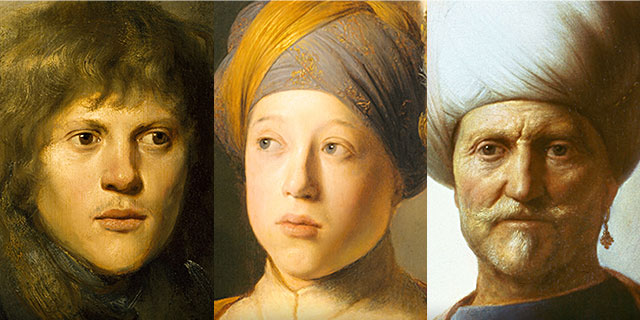Chronology
Friends and Rivals: Jan Lievens and Rembrandt
1606/7 Respectively, Rembrandt van Rijn and Jan Lievens are born in Leiden, a university town and textile center in seventeenth-century Holland
1615 At the age of eight, Lievens studies with Leiden figure and landscape painter Joris van Schooten
1617–19 Lievens moves to Amsterdam for two years to study with renowned history painter Pieter Lastman, under whom Rembrandt will apprentice for six months in 1624/25
1620 Rembrandt enrolls at Leiden University but soon withdraws to study with local painter Jacob Isaacsz van Swanenburgh
1620–24 New scholarship suggests that Lievens is in Utrecht between 1620 and 1624; his work shows the profound influence of the Utrecht Caravaggisti, especially Gerrit van Honthorst, Dirck van Baburen, and Hendrick Brugghen
1624–25 Rembrandt returns to Leiden and sets himself up as an independent master; the earliest works attributed to him are datable to these years
Late 1620s Lievens and Rembrandt certainly know each other and may share a studio during this period
1628/29 Lievens meets and insists on painting a portrait of Constantijn Huygens, secretary to Frederik Hendrik, the Prince of Orange; Huygens helps Lievens attain diplomatic and courtly commissions. Lievens paints Rembrandt’s portrait; Rembrandt uses Lievens as a model
1628–31 Constantijn Huygens prompts Lievens and Rembrandt into a friendly competition that results in many parallel works between 1628 and 1631: Samson and Delilah, The Raising of Lazarus, Christ on the Cross, and an old man sitting alone in contemplation—Rembrandt’s Jeremiah Lamenting the Destruction of Jerusalem and Lievens’ Job in His Misery. Rembrandt seems to backdate some paintings, making it appear as though he were the initiator rather than the follower
Huygens praises the work of Lievens and Rembrandt in his autobiography: “Rembrandt is superior to Lievens in judgment and in the representation of lively emotional expression, but Lievens has greater grandeur of invention and boldness than Rembrandt.”
1631/32 Rembrandt moves to Amsterdam to begin a successful career as a portrait painter; the remainder of his long career takes place in Amsterdam
1632–35 Lievens visits London, where he works as a portrait painter at the court of King Charles I; Lievens probably serves as one of Anthony van Dyck’s assistants, but none of his portraits from this period are known
(continued)





